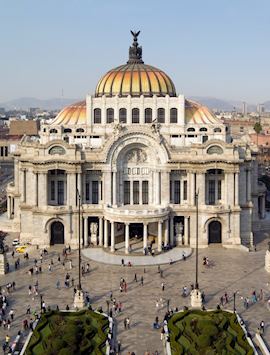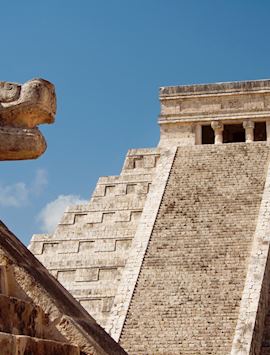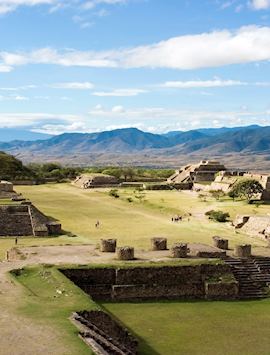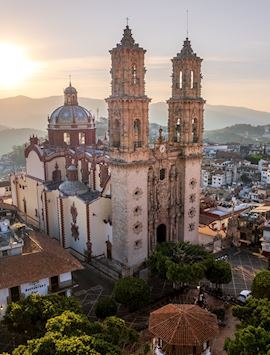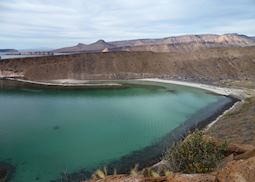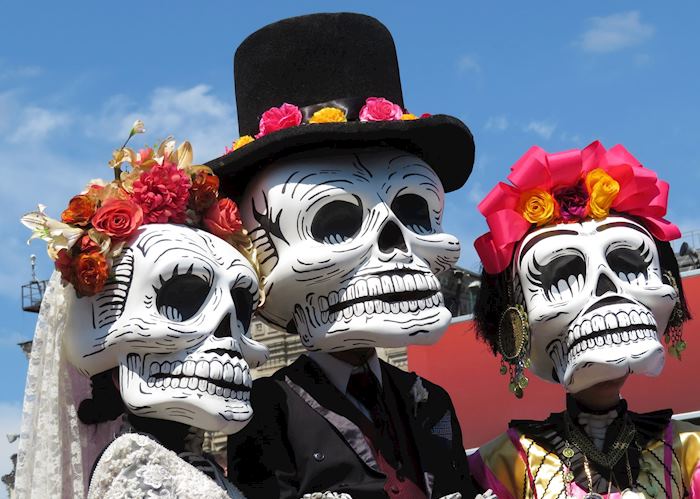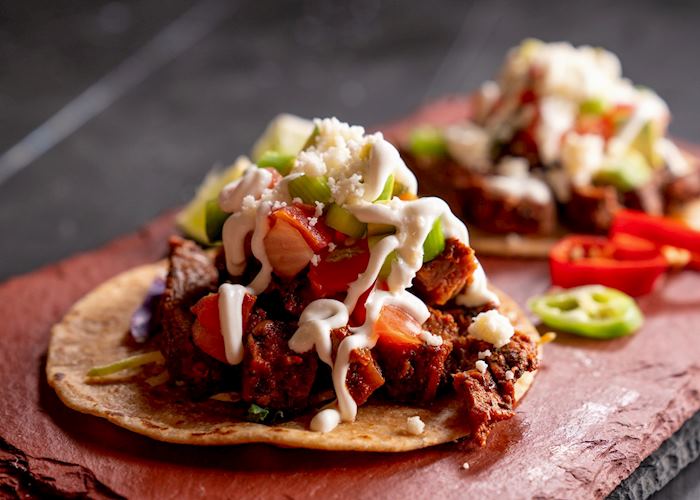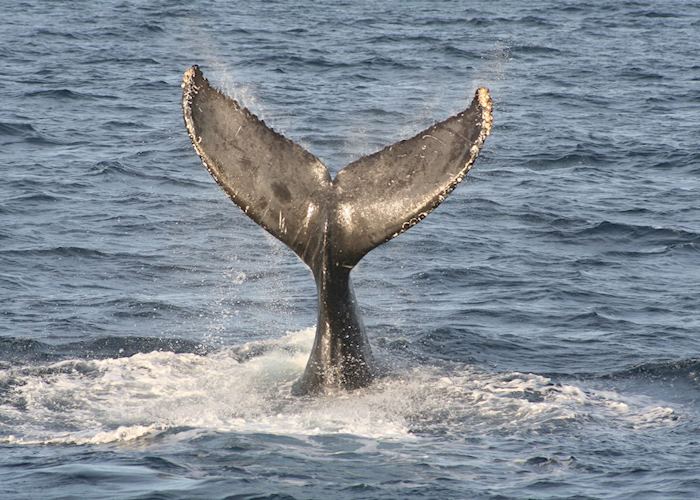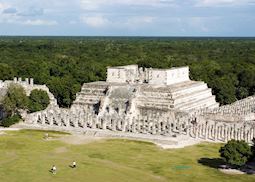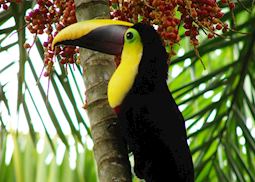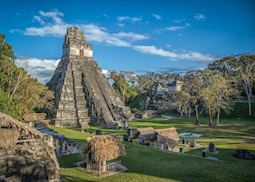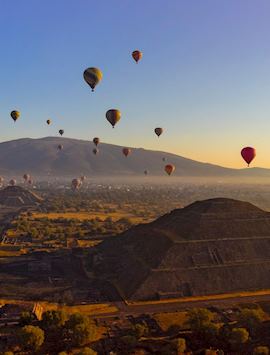
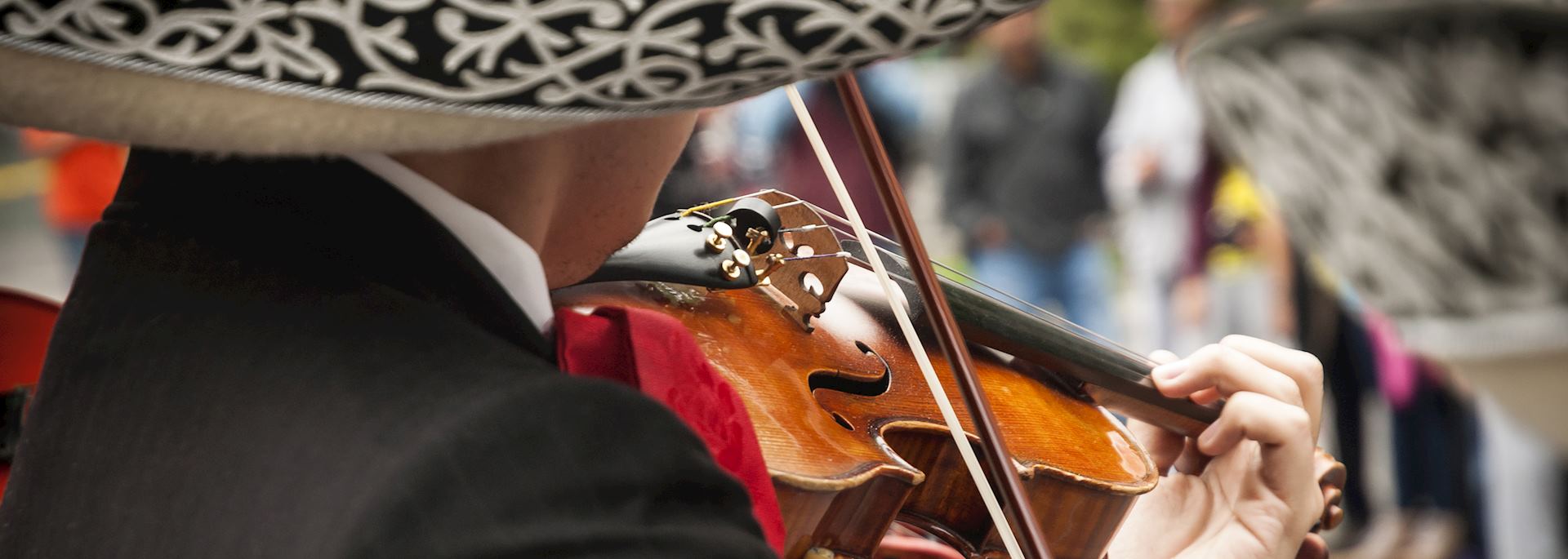
Tailor-made Mexico vacations shaped around your passions
The temples of Chichén Itzá, swimming in aquamarine underground cenotes, Mexico City from the perspective of Frida Kahlo’s paintbrush or its exuberantly costumed processions for the Day of the Dead... On a tailor-made vacation with Audley, we won’t just show you the popular places to visit in Mexico. Our specialists, leaning on their experiences of traveling and living in the country, will help you decide on the places that speak most to you.
Ride the Copper Canyon railway to reach the wilderness of the Sierra Madre. Spy humpback whales breaching in the seas around Baja California. Go to church in tiny highland towns like San Cristóbal de las Casas, witnessing indigenous beliefs melding with Catholicism in shamanic ceremonies. Take a private cooking class in Oaxaca and learn how to make mole under the guidance of an expert chef.
The sleepy sands of Isla Holbox. The stately, Spanish colonial town of Morelia. Maya ruins smothered in jungle, deep in the Yucatán Peninsula. Travel at your own pace, in your own style, with the confidence that we’ll show you the best places to visit in Mexico.
Suggested tours for Mexico
These tours give you a starting point for what your vacation to Mexico could entail. Treat them as inspiration, as each trip is created uniquely for you.
Suggested activities for Mexico
Whatever your interests, our specialists will build activities into your trip that connect to how you want to experience Mexico.
-
Isla Espíritu Santo tour ![Isla Espiritu Santo, situated off La Paz, Baja California]()
Isla Espíritu Santo tour
La PazIsla Espíritu Santo tour
The island of Espíritu Santo is the closest island to the bay of La Paz and possesses the most stunning views of all the islands in the Sea of Cortez.
View details -
Mexico City art tour ![Diego Rivera Murals of the National Palace, Zocalo, Mexico City]()
Mexico City art tour
Mexico CityMexico City art tour
Murals depicting Mexico's history make up the cornerstone of Mexican art. Explore this artistic cultural side to Mexico City: with visits to the Museo Casa Estudio Diego Rivera y Frida Kahlo in the San Angel area east of Chapultepec and then Museo Frida Kahlo the 'Blue House' in Coyoacan.
View details -
Chichén Itzá excursion ![Chichén Itzá, Mexico]()
Chichén Itzá excursion
Chichén ItzáChichén Itzá excursion
The famous Mayan pyramids of Chichén Itzá are over 1,500 years old. The name Chichén Itzá is a Mayan word: CHI (mouth) CHEN (well) and ITZA (of the witch water). Some say this is because people were often thrown into the nearby cenote as sacrifices, and those who survived were believed to be seers.
View details
Why travel with Audley?
- 100% tailor-made tours
- Fully protected travel
- Established for over 25 years
- 98% of our clients would recommend us
Best time to visit
Our specialists advise on the best months to visit Mexico, including information about climate, events and festivals.
Travel advice
Practical tips for traveling to Mexico, from social protocols to guidance on money matters, with a link to the latest US State Department travel advice.

Request our brochure
Covering all seven continents, The World Your Way shows you how you can see the world with us. It features trip ideas from our specialists alongside hand-picked stays and experiences, and introduces our approach to creating meaningful travel experiences.
Mexico in pictures
Our expert guides to traveling in Mexico
Written by our specialists from the viewpoint of their own travels, these guides will help you decide on the shape of your own trip to Mexico. Aiming to inspire and inform, we share our recommendations for how to appreciate Mexico at its best.
-
![My travels in Mexico]()
My travels in Mexico
Riding the El Chepe Railway, snorkeling in the calm waters off the sleepy beach town of Zihuatanejo, and trying out one of the world’s fastest zip-lines — Audley specialist Anna shows how you can get off the beaten track in Mexico.
-
A first timer's guide to Chichén Itzá ![Chichén Itzá, Mexico]()
A first timer's guide to Chichén Itzá
A first timer's guide to Chichén Itzá
An ancient Mayan capital and the most famous of all the archaeological sites on the Yucatán Peninsula, Chichén Itzá is not to be missed on a trip to Mexico.
Read this guide -
What to do in Mexico: our highlights guide ![Teotihuacán, Mexico]()
What to do in Mexico: our highlights guide
What to do in Mexico: our highlights guide
Mexico’s character is many-sided. From cosmopolitan colonial cities and vibrant markets to mountain wilderness, sleepy Caribbean islands, vast cacti-covered deserts and a wealth of intriguing ancient ruins, specialist Carolyn shares her highlights.
Read this guide -
Family vacations in Mexico ![Temple of the Warriors, Chichén Itzá]()
Family vacations in Mexico
Family vacations in Mexico
Audley travel specialist Anna shares her tips for where to go and what to do on a Mexico family vacation. Focusing on the Yucatán Peninsula, she explains how you can combine beach time with wildlife watching and visiting ancient ruins.
Read this guide -
Luxury vacations in Mexico ![Palacio de Bellas Artes, Mexico City]()
Luxury vacations in Mexico
Luxury vacations in Mexico
Read our specialist's guide on Mexico luxury vacations, including the best ways to see its Maya ruins, towns and cities.
Read this guide
Other popular destinations
Still looking for ideas? If Mexico has captured your interest, we think you might also like these destinations.
